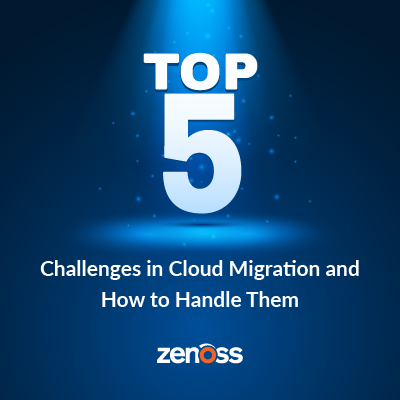
#1 Migration Strategy
Many enterprises embark on cloud migration initiatives to achieve higher application performance, scalability and cost-efficiency, but migrating critical applications to cloud requires careful planning and deliberation. For instance, the “lift and shift” model may not work for all mission-critical and proprietary applications. The additional complexity may cause analysis paralysis. According to 2018 IDG Enterprise Cloud Computing Survey, more than one-third of respondents (38%) shared that the IT department feels pressure to migrate 100% to the cloud. Organizations hit a roadblock when they evaluate cloud vendors with limitations on automation or management functionalities. Gauging which infrastructure components would provide mobility, performance and cost-efficiency post-migration would help you avoid any mistakes before choosing your cloud service provider.
#2 Risk of Downtime
The question of manageability comes into play once you start your migration. Can you manage things during the transition or after you have moved them to the cloud? Even though the IT team may know how to manage applications on premises, deploying them on a new platform might still be a challenge without proper expertise. Any loss in application performance or functionality resulting in downtime could hurt your customers. Enforcing service-level agreements with the provider and monitoring your cloud infrastructure would ensure good user experience.
#3 Security
According to SANS 2019: The State of Cloud Security, 56% of respondents said they are extremely concerned about cloud security. The hesitation toward cloud migration increasingly has less to do with the notion that public cloud is insecure and more to do with technology and application-specific concerns. Cloud providers like AWS subject themselves to far more stringent security audits and controls, so the biggest risks lay with poorly designed applications and weak controls around access to systems and information managed by the organizations themselves. Especially for enterprise application migration project the security concerns rise due to data sensitivity. Research into cloud service providers that take security seriously with additional encryption and redundancy will prevent some missteps post-migration.
#4 Cost
For large enterprises, moving existing workloads to the cloud requires time and resources. Determining the true cost starts with an assessment to check if migration is technically feasible and worthwhile. Asking questions like the following will help you understand the overall cost: Will the application run faster or slower in the cloud? Will it need to be redesigned or rewritten for the cloud? What types of resources and expertise are needed to achieve cost-effective migration? Migrating enterprise applications may also change the terms and costs of licensing and maintenance of existing applications. In such cases, switching to a third-party SaaS equivalent may be a more cost-effective solution than migration.
#5 Monitoring
Constantly changing infrastructure components during cloud migration can go unmonitored. Many enterprises keep certain mission-critical applications on premises, migrating only those that need to be on cloud. With legacy monitoring tools, managing applications both on premises and in the cloud is challenging. You can minimize operational burden by looking for solutions that seamlessly monitor infrastructure performance irrespective of location — on premises or cloud. Proactively monitoring and managing those cloud based components would help mitigate issues that affect your user experience.
How can Zenoss help?
With full understanding of service dependencies, Zenoss prevents disruptions before, during and after cloud migrations. It helps you seamlessly migrate workloads in physical infrastructures to public, private and multicloud environments without disruptions. Zenoss allows IT teams to understand system interdependencies, helping to identify redundant equipment and eliminate the costs of repairing unnecessary system components. Zenoss provides the ability to introduce new levels of redundancy and scalability during cloud migration, and, in turn, reduces your operational costs. You can simplify your cloud migration journey by ensuring the feasibility and benefits before you move critical systems to public/private cloud. If you’d like to see any of these capabilities in action, please ask us for a demo!






